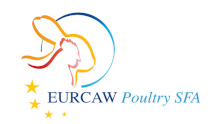Document type: Scientific article published in Frontiers in Veterinary Science
Authors: Kareemah Chopra, Holly R. Hodges, Zoe E. Barker, Jorge A. Vázquez Diosdado, Jonathan R. Amory, Tom C. Cameron, Darren P. Croft, Nick J. Bell, Edward A. Codling
Preview: Understanding the herd structure of housed dairy cows has the potential to reveal preferential interactions, detect changes in behavior indicative of illness, and optimize farm management regimes. This study investigated the structure and consistency of the proximity interaction network of a permanently housed commercial dairy herd throughout October 2014, using data collected from a wireless local positioning system. Herd-level networks were determined from sustained proximity interactions (pairs of cows continuously within three meters for 60 s or longer), and assessed for social differentiation, temporal stability, and the influence of individual-level characteristics such as lameness, parity, and days in milk. We determined the level of inter-individual variation in proximity interactions across the full barn housing, and for specific functional zones within it (feeding, non-feeding). The observed networks were highly connected and temporally varied, with significant preferential assortment, and inter-individual variation in daily interactions in the non-feeding zone. We found no clear social assortment by lameness, parity, or days in milk. Our study demonstrates the potential benefits of automated tracking technology to monitor the proximity interactions of individual animals within large, commercially relevant groups of livestock.




